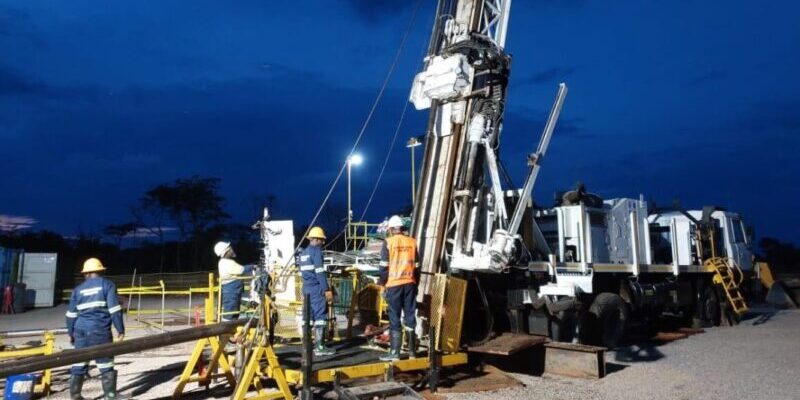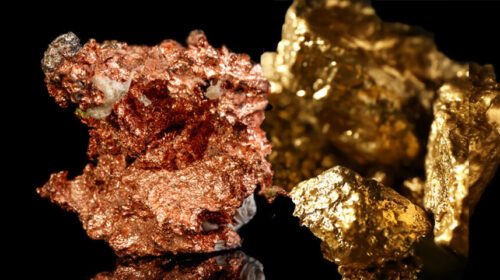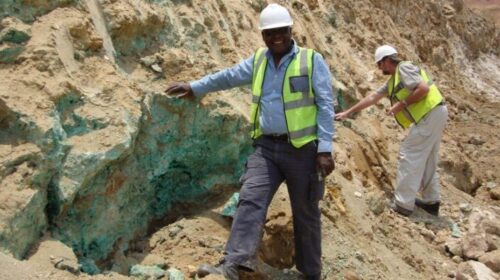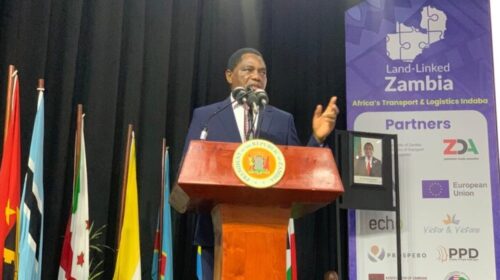On the ground with Kobold Metals at Mingomba in Zambia
Since minerals exploration and development company KoBold Metals announced it was investing $150 million in developing a copper deposit in Zambia’s Copperbelt Province, the media has been abuzz about the role that “artificial intelligence” and “machine learning” played in discovering what is estimated to be a reserve containing 247 million tonnes of copper with an average grade of 3.6%.
Mining For Zambia sat down with the company’s co-founder and President, Josh Goldman, to get an update on the project and find out how this mystical technology works.
KoBold’s innovative approach to mineral exploration recently led to the discovery of a significant copper deposit at Mingomba in Copperbelt Province.
In December 2022, you announced an investment of $150 million to advance the project in partnership with ZCCM-IH and EMR Capital. What’s been happening on the ground at Mingomba since then?
We’re on-site and drilling! If you go to Mingomba today, you’ll see two drill rigs spinning – and three more are on the way. You’ll see a camp under construction for another drilling contractor and a lot of drill pads [a base on which a drill rig sits].
From an aerial view, you’d be able to see several roads that have been rehabilitated and, on the KCM tailings storage facility, you’d see a causeway that we built out of crushed rock so we can access pads that we’ve built on the pile. We’ve also got new drill rigs arriving over the next few weeks, so we are rapidly ramping up!
We’re building the team as well, and hiring a whole range of people – geologists and technicians, and people in finance and human resources and community engagement – with the majority of them on-site at Mingomba Mining, the joint venture between KoBold, ZCCM-IH, and EMR Capital [Lubambe Copper Mine’s majority shareholder]. We’re also building a Zambian company which will be led by a Zambian CEO.
Mingomba is KoBold’s most significant project, and the furthest along. Still, our aspirations in Zambia are to make many discoveries and contribute multiple new mines to grow copper production in the country.
One of KoBold’s goals is to boost discovery rates 20-fold, compared with traditional field exploration efforts. How is that possible?
Deep collaboration between our geoscientists and data scientists is key to our approach. We make predictions about mineral resources using various types of data, from public and historical data to data collected during AI-guided field programs. We use techniques to look for signals that heuristic [hands-on] or conventional industry methods can’t detect.
If we detect a geological anomaly that’s of interest using this array of data, we then come up with a probability distribution for how far beneath the ground it is.
We’re always trying to quantify our uncertainty. We ask ourselves: What do we know, how do we know it, how precisely do we know it, and how can we test for it? These methods are used to guide each of our exploration decisions.
Geoscience meets data science
Is this approach different from what conventional explorers do?
Yes. Common practice in the industry is to come up with one’s best estimate of the rocks below the surface and their properties. However quantifying one’s uncertainty about what’s underground is not common practice.
But by quantifying our uncertainty, we can design exploration programs that most effectively reduce it. This means we can reach a higher confidence level faster and cheaper – enabling us to define resources more quickly and at lower cost.
“By quantifying our uncertainty, we can design exploration programs that most effectively reduce it (….) enabling us to define resources more quickly and at lower cost.”
Does this approach bypass the need for ‘traditional’ mineral exploration methods?
No, we undertake the same field activities as traditional explorers. This isn’t a case of simply shoving a bunch of data into a machine and getting a treasure map out! There are many decisions that we have to make throughout an exploration program, such as where in the copper belt to focus, how to select targets for further ground investigation, and how to design surveys. Our objective is to improve each of these decisions by generating rich data quickly. Improvements at every stage of decision-making compound to produce better exploration outcomes in the aggregate.
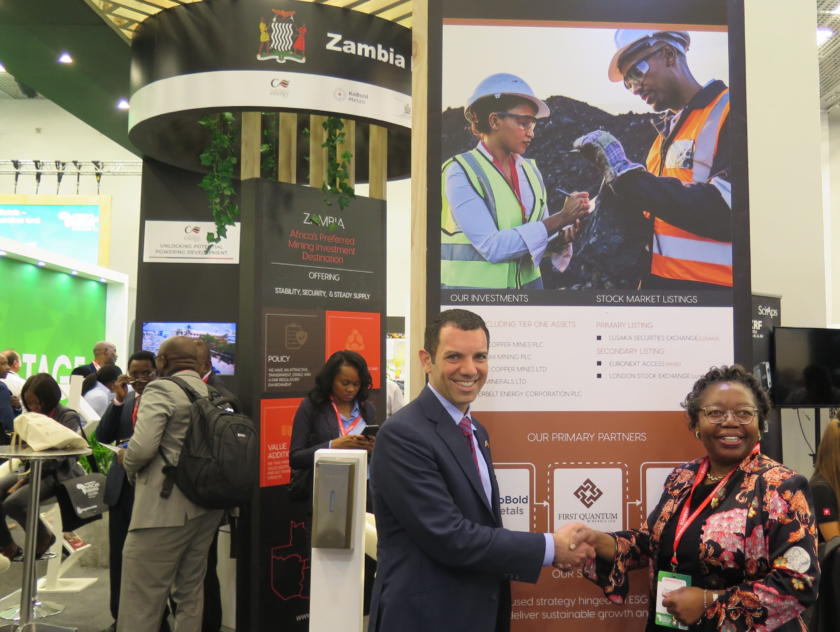
What are KoBold’s next steps?
Our objective is to get Mingomba to the point where it’s ready to become a mine as rapidly as possible. From a technical standpoint, the most important activity we’re focused on is resource definition.
This involves defining the resource to a much higher level so we understand how much copper there is and how it is distributed in space. The average grade of the resource is 3.6%, but portions of the deposit are greater than 5%. So there are opportunities to improve on that significantly: in grade, tonnage, and confidence levels.
Other components of our work at the moment are metallurgical and geotechnical. We need to ask questions like: ‘If we can get the rock out of the ground, how much copper and cobalt can we recover, and what kind of process is required?’ These questions help us think about the mine’s design and, ultimately, build a business case for its construction, which will likely be a $1 billion-plus capital investment.
“We need to ask questions [that] help us think about the mine’s design and, ultimately, build a business case for its construction, which will likely be a $1 billion-plus capital investment.”
Tell us a bit about what defining a resource entails at KoBold, and how your methods differ from what a standard explorer would do.
Essentially, we make predictions about the nature of the resource in the places we haven’t drilled yet – that could be one metre, ten metres, or 800 metres away from the nearest drill hole.
Then we target drill holes in places with the highest uncertainty to most rapidly improve our understanding of what lies below the surface.
Instead of drilling where we already have high confidence in the resource definition, we strategically collect data from areas that will provide the most information, to help us decide where the next hole should go – and the one after that, and so on. It’s a sequential planning exercise.
We’re applying techniques rooted in Decision Science – widely used in fields like aviation navigation – to guide our decision-making. We need to consider: How can we get the most information out of this dollar and this time so that we get the best possible understanding of the resource to support the development of a mine in the shortest time frame?
Suppose you design a mine plan for one chunk of resource. In that case, you may discover that the mineralization is actually much better two kilometers away, and your mine plan is no good anymore.
You will have designed a very suboptimal mine because your shaft is in the wrong place. Or, if you’re wrong about the boundaries of the resource, you might miss out on something really valuable. False negatives can be very expensive. That’s one of the reasons that an aggressive exploration program here is so important: we need to know where the deposit’s centre of mass is.

Approximately how long do you anticipate the resource definition phase will take?
The ore body at Mingomba is more than 1,200 metres below the surface in most locations, so these are difficult, time-consuming holes to construct.
Historically, less than half of the holes drilled on this property succeeded in reaching that target depth. When things go well, it takes three months to construct one hole, and, as you can imagine, it requires dozens of holes to define a resource. So, one hole – essentially one new data point – takes three months of work and, in round numbers, a million dollars.
Our goal is to create the most valuable, sustainable resource possible so we can set up a long-lived and successful mining operation.
So we need to do really high-quality resource definition. But that doesn’t take weeks or months. We’re talking about a few years, which is actually very fast when it comes to mineral exploration.
Also, a great resource alone is insufficient to support the development of a mine. One has to study the system’s hydrology – particularly with a very deep resource like this, where there’s a lot of water. We’ll be conducting that work in parallel with the resource definition.
How confident are you that Mingomba is an ‘economically viable reserve’ with the quantity and quality of minerals that will justify the investment necessary to develop it into a mine?
Our confidence that Mingomba is an economically viable project is reflected in our enthusiasm to make a substantial investment [$150 million].
It sounds like KoBold’s approach to mineral exploration is truly cutting-edge, which puts the company ahead of the curve.
I should point out that a continuous process of considered experimentation is key, and it takes resources to embark on a project like this. Small companies may not have the resources, and larger companies may not see these levels of innovation emerging from already well-established ways of working.
We’re very fortunate to have amazing sponsors who have enabled us to build our team and this set of capabilities. They are aligned with our vision to reduce the world’s dependence on fossil fuels and, like us, are committed for the long term. Because we’re confident in our approach, we can press the gas pedal.
264 total views , 1 views today


